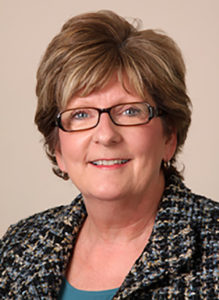Editor’s Note:The relationship with your prime vendor is a lot like a marriage. You are in it for the long haul and if you pick the right partner, you will bring out the best in each other. This column explores both new and everyday examples of the different ways distributors and supply chain executives are working together to make their committed, long-term partnerships successful.
Almost all inventory delivery programs require some level of customer-vendor alignment to ensure products reach their intended destinations. Increasingly, healthcare providers are exploring alternative stockless and low-unit-of-measure (LUM) models that allow providers to reduce on-hand supplies by shifting central distribution functions from the facility to the distributor. These models require high levels of communication and collaboration, since products are often delivered in pre-organized totes by specific care level or department for immediate use, but ultimately allow materials management staff to focus on higher-value tasks than simply opening boxes.
HIDA recently spoke with Alex Caldwell, Director of Sales & Marketing for the Claflin Company, to understand what makes for successful stockless partnerships and how customers are using these models to maximize inventory efficiency. Claflin’s flagship stockless model is characterized by increased distributor inventory levels and higher delivery frequency, and continues to evolve as it looks for meaningful ways to replenish provider inventories.
The set-up
The goal for any stockless program is to minimize on-hand inventory while improving product availability, without creating more replenishment activity than justified by the cost reductions. “If you’re a small hospital, your delivery schedule may be only two or three days a week,” explains Caldwell. “Different programs will work for different customers, and no two models are the same.”
Customers who try to fit supplies into spaces that arbitrarily define their replenishment levels or processes often make ideal stockless candidates. Stockless vendors use this outdated inventory practice as a teaching opportunity to show how spaces can be repurposed for financial gain by using them for healthcare services instead.
Suppliers must work very closely with providers first to understand what and how products get used to determine par replenishment levels. “You have to start out as a team right from the beginning,” says Caldwell. “It’s not about telling customers what they’re doing wrong, but more about educating them on how to hit par levels and how to understand what’s actually sitting in inventory at any given time.”
For this reason, provider storeroom reports are perhaps most valuable for setting up stockless programs, since they show what gets issued out onto the floor and can provide more meaningful product utilization data beyond anything vendors can determine from bulk shipment records. “That’s how we are able to determine precise par replenishment levels, which can also be manipulated or changed immediately whenever a situation calls for it,” adds Caldwell.
Going cold turkey and switching to 100 percent stockless is never advisable, according to Caldwell. She recommends customers move to these models through attrition, starting with locations or divisions that will not be as interruptive to the care model and will allow staff to get comfortable with new systems in place.
Caldwell points out that for stockless conversions – or any new business venture – to be successful, customers must remain open-minded and willing to share their organizational vision and goals. “If you’re both not on the same page, it’s going to take a lot longer to reach your ultimate objective.”
The payoff
Just as no hospital or healthcare provider is the same, all stockless models are different. Similarly, when customers sign new vendor agreements, it is not etched in stone that these delivery models will look exactly the same over the span of the supplier relationship.
There are, however, several benefits common to all stockless delivery models that can help providers reduce asset costs and increase efficiency:
- Staff time: “Stockless is perceived as putting people out of jobs, but in reality it allows healthcare facilities to redeploy staff to care-focused tasks,” says Caldwell. With lower and more frequent deliveries, healthcare staff spend less time moving boxes and running back-and-forth to stock rooms to refill supplies. Giving staff more flexibility to work on other projects can also help enhance current revenue streams or develop new alternatives.
- Product integrity: When providers buy direct from manufacturers, they often receive items by the case – rarely the lowest unit of measure – which is sometimes justified. But Caldwell often asks customers, “Why not put these items through distribution and let us break them down for you based on the activity that warrants it?” Products can easily expire, become damaged, get lost, or become obsolete when a new widget comes out, leaving customers with unusable inventory.
- Less waste: In addition to removing operational waste, stockless programs reduce physical waste by taking corrugated cardboard and shrink wrap out of the equation. “We’re stripping products down to the tote level and will even take back what customers don’t use or recycle with our corrugated recycling program,” adds Caldwell. Decreasing disposal costs and employee infection risks can quickly add up to long-term business savings for providers.
Although stockless conversions initially require high levels of collaboration and trust between vendor partners, Caldwell notes that once the model evolves and reaches a certain comfort level, “It’s truly just a matter of managing the account and conducting regular customer business reviews to make sure needs are being met.” For Caldwell, none of her stockless customers have ever reverted back to their traditional distribution model, which is a testament to the value of the model and a true sign of success.

